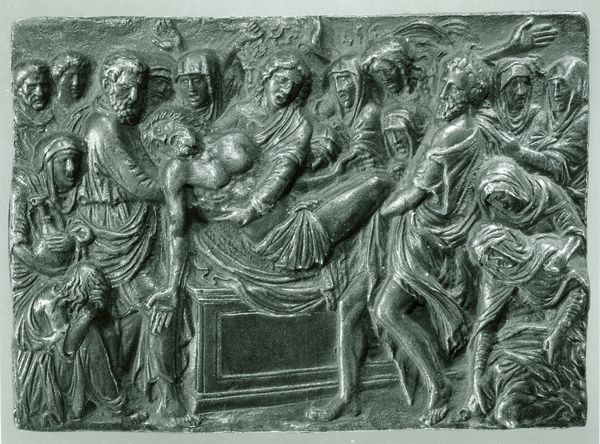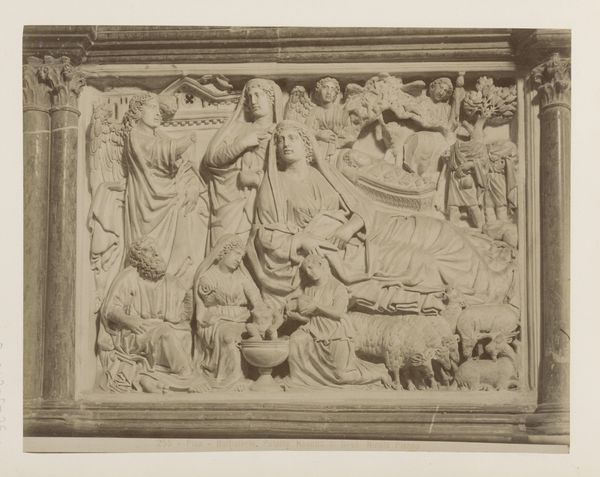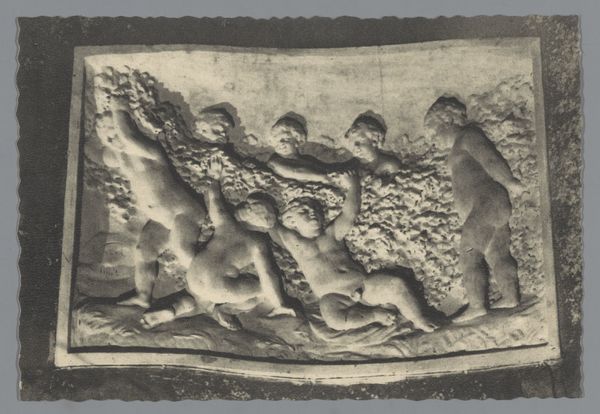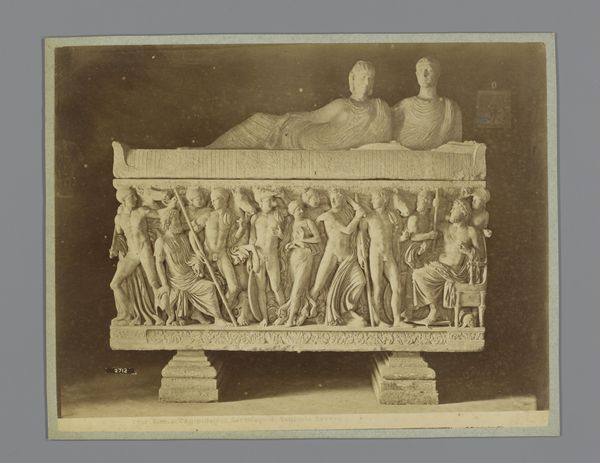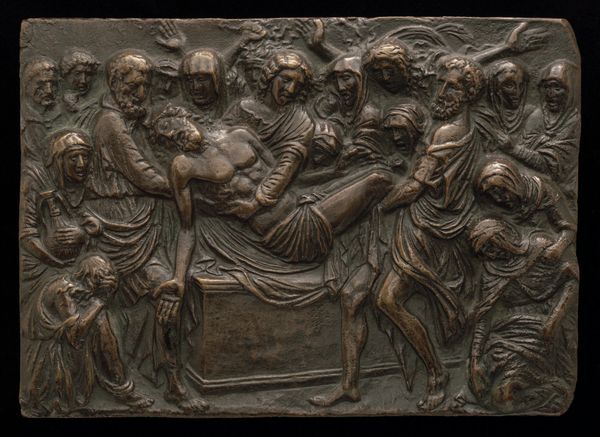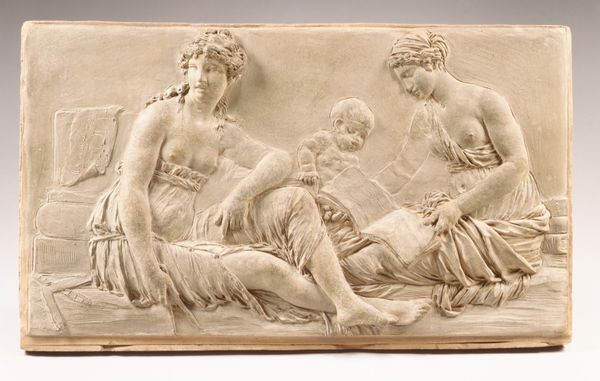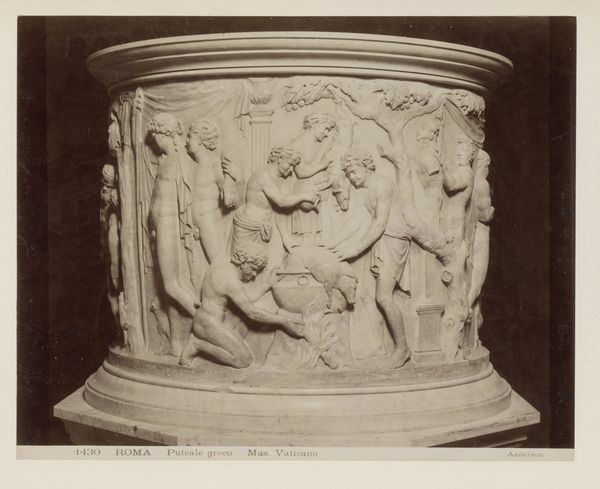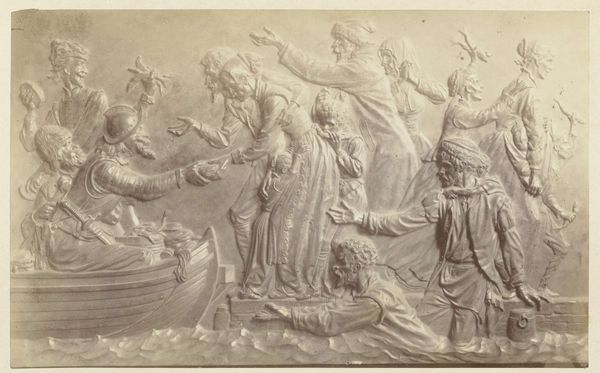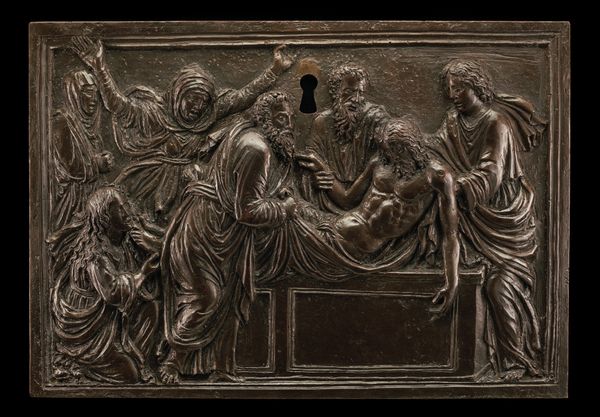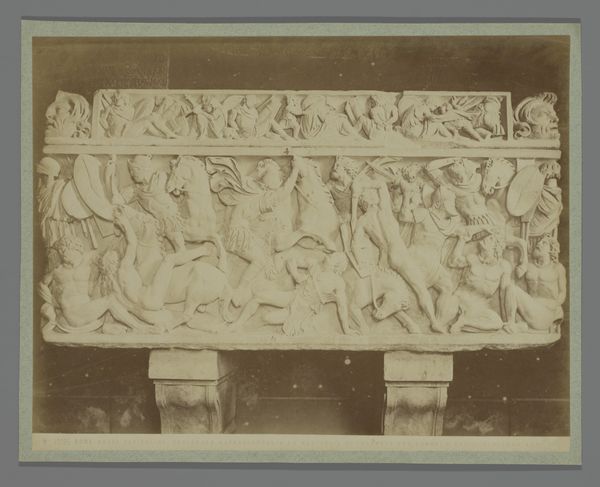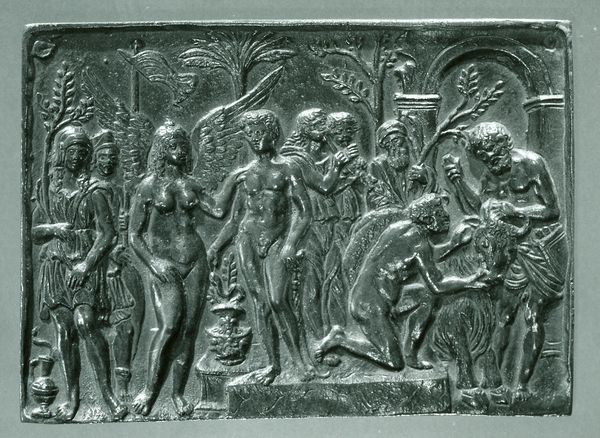
carving, relief, sculpture, marble
#
carving
#
sculpture
#
relief
#
classical-realism
#
carved into stone
#
sculpture
#
genre-painting
#
history-painting
#
academic-art
#
marble
Dimensions: height 150 mm, width 101 mm
Copyright: Rijks Museum: Open Domain
Editor: Here we have "La Champagne au XVIIIe siecle, Bas-relief sculpté dans la craie," dating roughly from 1930 to 1960. It depicts a lavish party scene in incredible detail. What strikes me is the energy captured in a static medium – almost frozen revelry. How do you interpret this work? Curator: It's fascinating how this piece uses historical genre painting to comment on modern celebrations. This relief gives form to the complexities inherent in depictions of wealth, especially when considering the legacy of colonialism which allowed champagne culture to flourish in France at this time. Note the specific class signifiers embedded within the sculpture. What does that suggest to you about the intended audience and its social function? Editor: So, beyond a simple historical snapshot, you're saying it potentially served as a commentary on wealth and social class? The Champagne region and the celebrations were directly associated with power, success, colonialism and privilege... Curator: Precisely! Think about who has traditionally held positions of power, and whose labor has often been erased. A modern lens demands that we see these depictions through the perspective of gender, race, and power dynamics. Do the individual figures invite the viewer to consider alternative interpretations or empathize with the champagne growers? Editor: I hadn't considered those angles before. It definitely changes how I view the celebration, making it a point of departure into larger sociological issues... It makes one question what and who is actually being celebrated here, doesn’t it? Curator: Exactly! That critical engagement, acknowledging historical context and social ramifications, allows us to draw new meaning from it and from celebrations today! Editor: That’s incredibly insightful; I’ll never look at a historical genre scene the same way again!
Comments
No comments
Be the first to comment and join the conversation on the ultimate creative platform.
